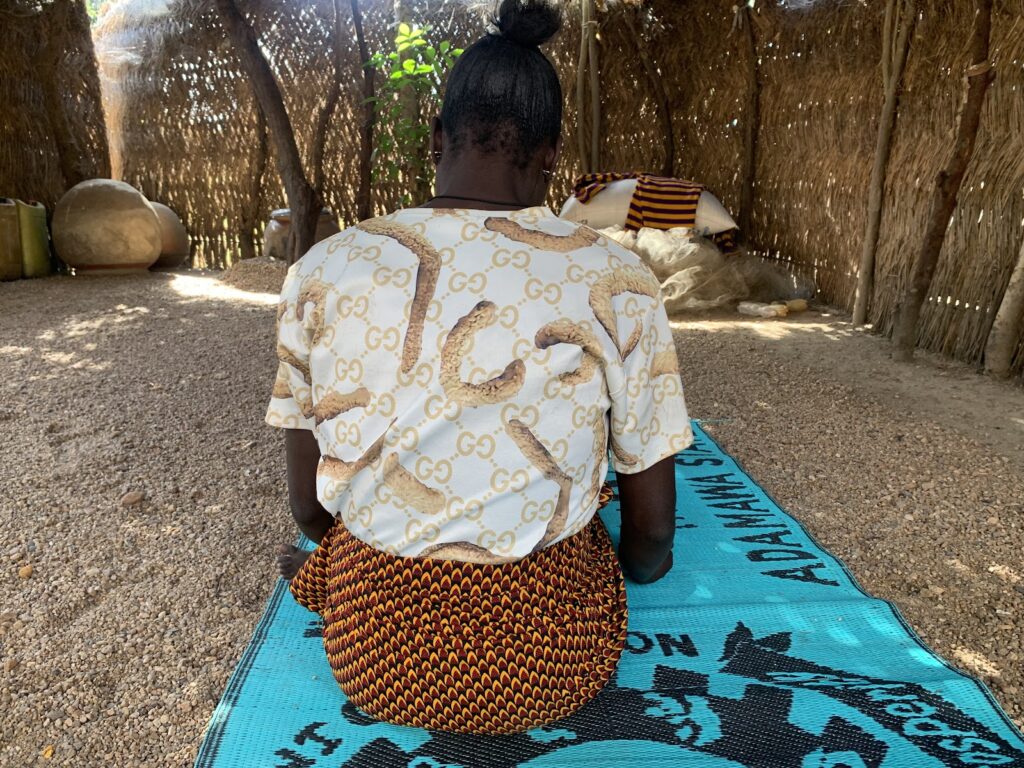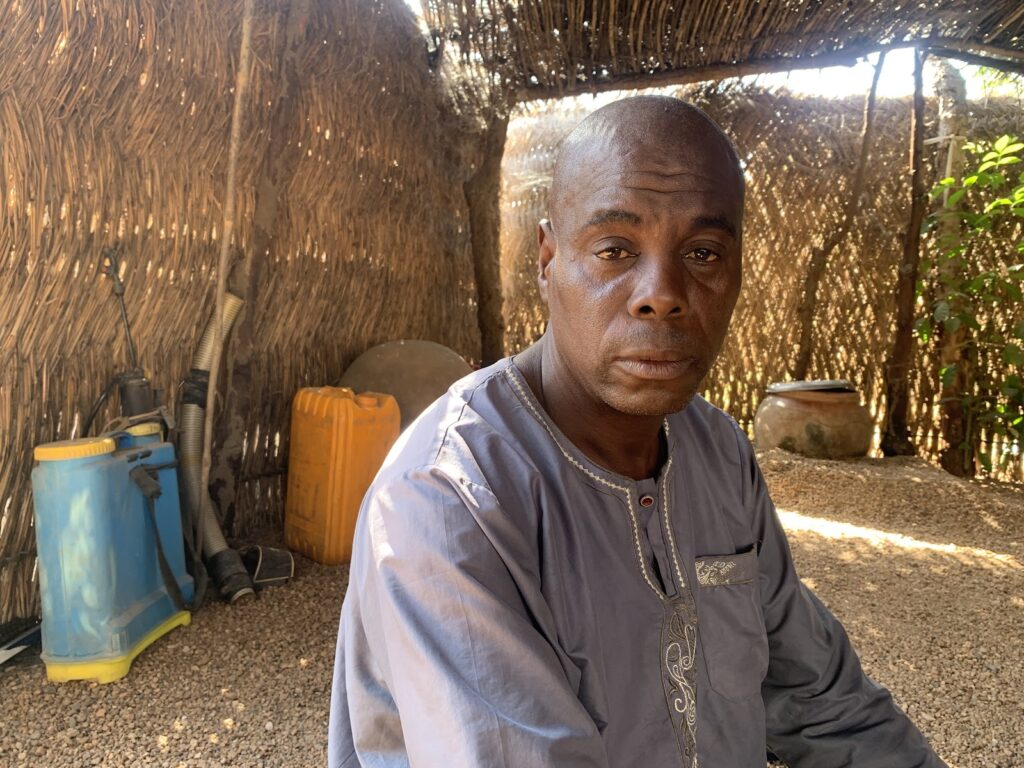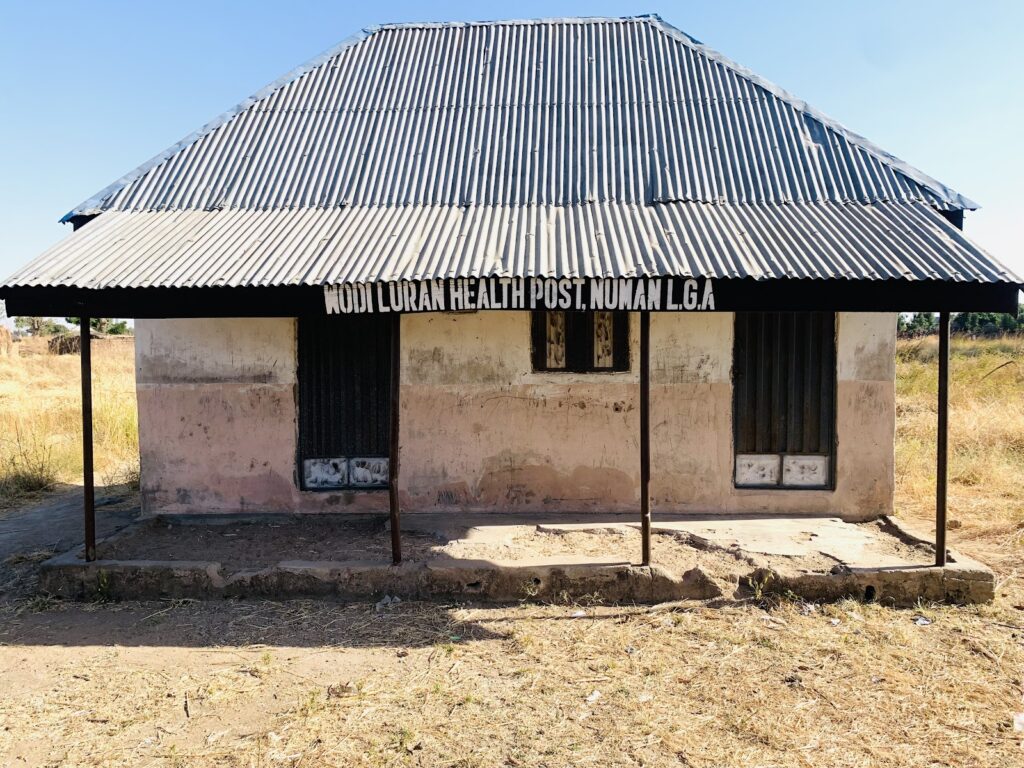“If I could go back in time, I would change my fate,” Deborah Salama said, her eyes fixed on the child resting on her lap. “I would make things right and make sure that I don’t start having babies at 15.”
When she lifted her head, her eyes welled up with tears.
Before her pregnancy, Deborah was an eager schoolgirl who had just completed her final junior secondary exams. Her days revolved around school, helping her parents on the farm, and earning money working on neighbouring farms. She describes her school days as a source of comfort, a time when her future seemed brighter.
That changed when she became pregnant.
“My parents were very mad at me,” Deborah recounted, gently rocking the child in her arms. “I disappointed them.” Her parents had hoped to enrol her in senior secondary school, but those plans evaporated.
It was common knowledge in Luran, a small village in Numan Local Government Area of Adamawa State, northeastern Nigeria, that Deborah was seeing Salama, a young man about twenty years old. Like many men in the agrarian village, he is a small-scale farmer.
When Salama’s mother offered to take her in, Deborah’s parents refused. They did not want to add to the burdens of a single mother raising multiple children. Instead, they supported Deborah and her unborn child alongside their nine other children, hoping she would return to school.
But the challenges didn’t end there. After a difficult first delivery left her anaemic, Deborah had another child while still living with her parents. Overwhelmed, her family eventually asked her to leave. At 17, Deborah moved in with Salama’s mother, a common fate for teenage mothers in Luran.
A widespread issue
Teenage pregnancies remain alarmingly common in rural Nigeria. One in five girls aged 15–19 has given birth or is pregnant, according to the Nigerian Journal of Medicine. Cultural norms, poverty, and lack of education drive the trend, particularly in remote areas like Luran.
“It is an age-long problem. Some cultures still promote early or child marriage,” Dorcas Elisha, Executive Director of the MarBen Foundation, a grassroots organisation focused on education in hard-to-reach Nigerian communities, told HumAngle. “In other cases, poverty pushes girls into relationships for financial support.”
The lack of awareness around sexual and reproductive health is another critical issue, Dorcas said. “Many rural girls don’t know how best to protect themselves. This further buttresses the importance of education,” she added.
Adolescent birth rates have declined globally, yet progress remains slow in vulnerable populations. According to the World Health Organization (WHO), over 21 million girls aged 15–19 become pregnant annually in developing regions. In 2023, Africa’s adolescent first birth rate was 97 per 1,000 girls, far higher than Europe’s rate of 13.1 per 1,000.
Health risks
Deborah’s first pregnancy was fraught with challenges. Without a healthcare facility in Luran, she had to travel six kilometres to Ngbalang, a nearby village, for antenatal care.
“I had constant headaches. My stomach was always aching very terribly back then, and I was always throwing up,” she recounted. “They said I had a serious infection and prescribed some drugs, which helped a bit.”
Dr Sadiq John, a Registrar in the Department of Obstetrics and Gynaecology at Modibbo Adama Teaching Hospital in Yola, explained that many pregnant teenage girls in rural communities lack adequate antenatal care. This often leads to undiagnosed complications, including sexually transmitted infections and pregnancy-induced hypertension.
Deborah’s labour lasted 10 excruciating hours, with her mother acting as a traditional birth attendant. “It was a terrible experience,” she said. “I lost so much blood and thought I wouldn’t survive.”
However, she was later rushed to the Ngbalang Primary Health Centre, where she received emergency treatment.
By the time the baby boy was pulled out of her, she said that she was nearly out of breath.
Malnutrition further compounds the risks for teenage mothers, said Dr Sadiq. “Low blood levels from poor nutrition increase the risk of complications during delivery and can affect the baby’s health.”
A study by the National Library of Medicine identifies premature births, low birth weight, and high rates of neonatal and postneonatal morbidity and mortality as significant risks. Among vulnerable populations, poor nutrition and unhealthy eating habits exacerbate these challenges.
In 2023, UNICEF reported that over 7 million adolescent girls and women of reproductive age in Nigeria were malnourished, placing their newborns at risk.
Another education cut short
Jennifer Wesley, another teenage mother from Luran, has faced challenges similar to Deborah’s. At just 16, she became pregnant; now, at 18, she is expecting her second child. Her father, Wesley Yuguda, a security guard, shoulders the responsibility of supporting Jennifer, her young child, and several other dependents.
Like many of her peers in Luran, Jennifer is an unmarried adolescent who has become a mother while still living with her parents. She told HumAngle that she dropped out of school after discovering her first pregnancy during her first year in senior secondary school.
Her first daughter has just turned two, and Jennifer recalls the day of the delivery with a bright smile, despite it being a near-death experience for her. Like many others, Jennifer was set to deliver at home. She had laboured for a whole day, but the baby was not forthcoming.

Wesley, her father, grew increasingly concerned for Jennifer’s life, so he took her on a bike and transported her to the clinic in Ngbalang, and was later referred to the General Hospital in Numan town. The delivery required an episiotomy (a cut through the area between the vaginal opening and the anus) to ensure her baby was safely delivered.
“They said my opening was too small to push out the baby,” Jennifer recalled.
According to Dr Sadiq, the physical development of adolescent girls plays a significant role in their pregnancy. “At the end of the day, we should have a healthy baby and a healthy mother,” he said. “But these adolescent girls, whose bodies are still developing, are at increased risk of complications.”
Deeply distressed
The consequences of teenage pregnancies ripple through families and communities. Jennifer’s father struggles to support 12 children and several grandchildren, including Jennifer and her child. She’s currently pregnant with her second child.

Wesley blamed peer influence and a lack of parental support for his daughter’s situation, as well as that of other teenagers in Luran. “If her mother were alive, she might have guided Jennifer better,” he said. Despite gathering some of the community’s teenagers to discourage early pregnancies, Wesley said the trend persists.
While some girls like Jennifer are fortunate enough to receive assistance raising their children, others end up being married to their partners. Dorcas noted that those who are married often find that the attention and financial support they once received from their partners diminishes, leading to emotional instability.
“The bigger problem is the cycle of poverty that continues,” she said. “When the consequences of their choices set in, many young mothers struggle with their mental health, leading to depression.”
Maternal healthcare gaps
Luran’s only primary health centre, built in 2021, is non-functional. Defence Nyaki, a community elder, said the facility initially had one staff member who eventually stopped coming. Residents now travel to neighbouring villages for healthcare.
In emergencies, villagers transport women in labour on motorcycles or walk the distance. The lack of affordable transportation and logistics prevents many women from seeking antenatal care. “We do our best with childbirth, but the lack of resources and skilled personnel remains a significant challenge,” Nyaki said.

In Luran, the absence of a standard healthcare system forces most women, including teenagers, to rely on traditional birth attendants during childbirth. This practice carries significant risks. According to Dr Sadiq, “Home births often come with risks, particularly in cases of obstructed labour. There’s a higher chance of losing both the mother and the baby, or the baby being born asphyxiated.”
What lies ahead
Now 20, Deborah has three children and relies heavily on her mother-in-law for support. Her husband’s farming livelihood was destroyed in a recent flood, leaving the family in deeper hardship.
“If I had the means, I would start a small business to support my children,” Deborah said.
On the other hand, Jennifer wishes she could return to school but recognises the challenges of balancing education with parenthood.
“We must provide special consideration for these teenage mothers, including support groups facilitated by therapists and social workers,” Dr Sadiq said. “This can help them realise their situation isn’t hopeless.”
